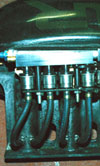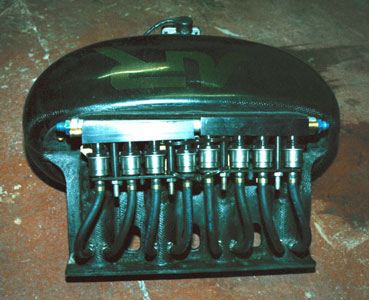What a gas?
 The use of fuels other than gasoline is nothing new in motorsports, yet somehow when teams first make their selection known it always takes us by surprise. So when the Team Aon Ford Focuses of BTCC drivers Tom Chilton and Tom Onslow-Cole finally admitted that they were forsaking the traditional BTCC-spec gasoline and fuelling up on LPG (Liquefied Petroleum Gas) it took some time for the news to sink in.
The use of fuels other than gasoline is nothing new in motorsports, yet somehow when teams first make their selection known it always takes us by surprise. So when the Team Aon Ford Focuses of BTCC drivers Tom Chilton and Tom Onslow-Cole finally admitted that they were forsaking the traditional BTCC-spec gasoline and fuelling up on LPG (Liquefied Petroleum Gas) it took some time for the news to sink in.
But LPG is nothing new in tin-top racing. Twelve years ago, Vauxhall introduced a prototype LPG-fuelled car to its racing series for the V6 Vectra SRi saloon. With rumoured alterations to the cams and exhaust compared with those required by the championship, and a prototype fuel injection system, the car flattered to deceive. Ineligible for championship points, the car undoubtedly had a competitive edge, but the question was always one of the modifications to the engine rather than the characteristics of the fuel. Although it was an interesting technical exercise, the project was more an example of marketing than pushing forward the boundaries of engineering.
In 2004 the fuel surfaced again, this time in the hands of the amiable but under-funded BTCC team of John George. And while the Vectra six years earlier used a prototype liquid fuel injection system, the BTTC-spec Honda Civic used a gaseous system.
LPG is one of those 'funny' fuels. It's generally considered a by-product of the oil and gas industry, as an impurity in natural gas or a product of petroleum refining, and depending on where you live in the world, its composition may vary. A mixture of mainly propane and butane, and in some cases propene and butanes as well, it is usually stored as a liquid but at ambient temperatures quickly reverts to a gas.
This characteristic can be very useful in an engine, and can be used to cool the incoming charge when injected into the port as a liquid. If injected as a gas, however, this advantage is lost and the displacement of air by the expanded fuel coming out of the evaporator leads to a further power loss. So the John George Civic was at a power disadvantage right from the off, and it was no wonder that the team ran in gasoline trim for most of the season.
In the UK, LPG (or Autogas as it is sometimes known) is about 99% commercially pure propane, and while its re-introduction to BTCC is clearly for marketing reasons, a number of technical challenges did face the development team. Funnily enough, one of these was getting the liquid fuel to vaporise fully inside the cylinder.

With a density of 0.54 kg/litre, liquid propane needs about 25% greater flow rate to supply the same amount of calorific value of fuel to the engine. Injecting this greater amount - and despite the slightly lower latent heat effect of the fuel of about 360 kJ/kg as opposed to 400-plus with gasoline - the fuel was accumulating on the cylinder walls and washing away the lubricant. Injecting the fuel well upstream of the traditional intake port position, as well as one or two other 'tweaks', eventually solved the problem but not before a couple of engines had been lost on the dyno.
With LPG currently selling in the UK at about £0.57 ($0.87) per litre at the pump and gasoline priced at an average of £1.20 (about $1.83), the interest in LPG by the typical motorist is bound to rise, despite the differences in calorific content and hence consumption in miles per gallon. But while marketing can have a strong influence on the vehicles and products used in the sport, we must never allow the organisers to forget that it is the engineering that makes it all work.
Fig. 1 - Gaseous injection manifold of the Honda Civic
Written by John Coxon